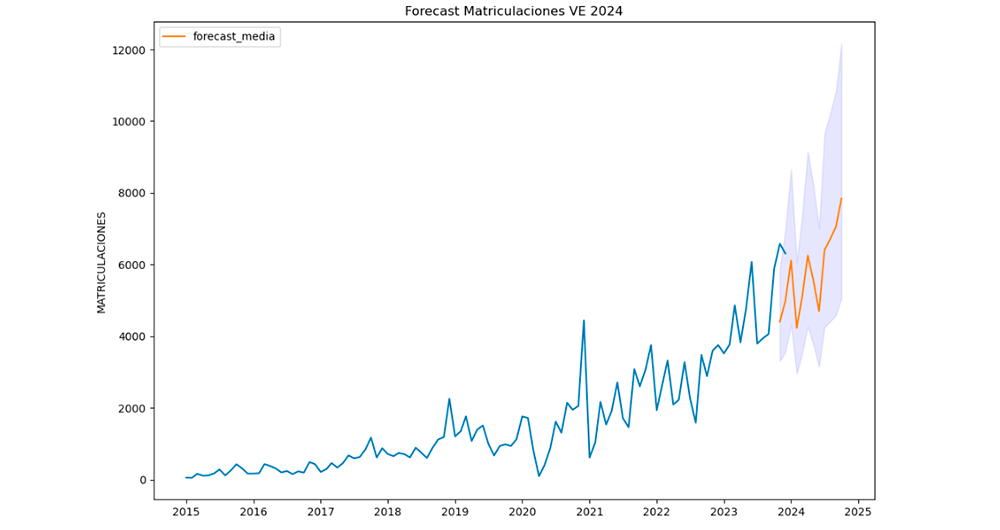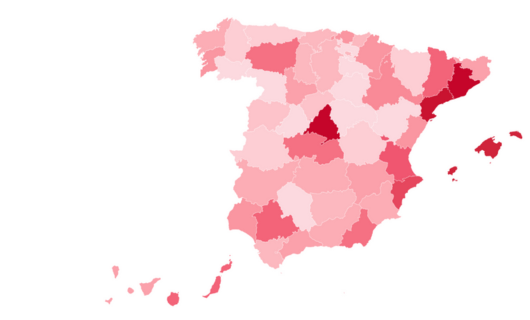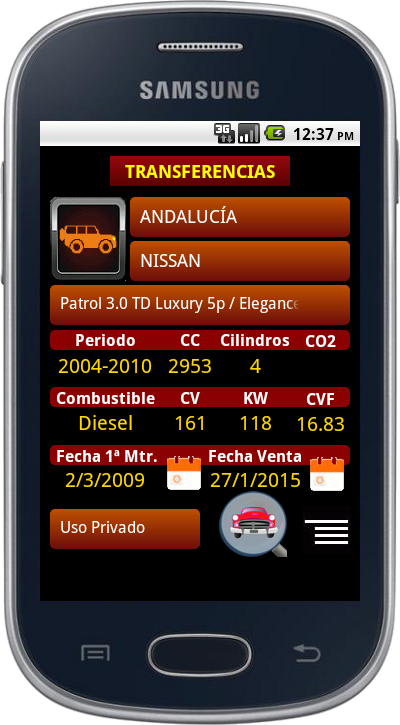
The General direction of traffic (DGT in its Spanish acronym) is the body responsible for ensuring safety and fluidity on the roads in Spain. Among other activities, it is responsible for the issuing of permits, traffic control and the management of infringements.
As a result of its activity, a large amount of data is generated, much of which is made available to the public as open data. These datasets not only promote transparency but are also a tool to encourage innovation and improve road safety through their re-use by researchers, companies, public administrations and interested citizens.
In this article we will review some of these datasets, including application examples.
How to access the DGT's datasets
DGT datasets provide detailed and structured information on various aspects of road safety and mobility in Spain, ranging from accident statistics to vehicle and driver information. The temporal continuity of these datasets, available from the beginning of the century to the present day, enables longitudinal analyses that reflect the evolution of mobility and road safety patterns in Spain.
Users can access datasets in different spaces:
- DGT en cifras. It is a section of the General direction of traffic that offers a centralised access to statistics and key data related to road safety, vehicles and drivers in Spain. This portal includes detailed information on accidents, complaints, vehicle fleet and technical characteristics of vehicles, among other topics. It also provides historical and comparative analyses to assess trends and design strategies to improve road safety.
- National Access Point (NAP). Managed by the DGT, it is a platform designed to centralise and facilitate access to road and traffic data, including updates. This portal has been created under the framework of the European Directive 2010/40/EU and brings together information provided by various traffic management bodies, road authorities and infrastructure operators. Available data includes traffic incidents, electric vehicle charging points, low-emission zones and car park occupancy, among others. It aims to promote interoperability and the development of intelligent solutions that improve road safety and transport efficiency.
While the NAP is focused on real-time data and technological solutions, DGT en cifras focuses on providing statistics and historical information for analysis and decision making. In addition, the NAP collects data not only from the DGT, but also from other agencies and private companies.
Most of these data are available through datos.gob.es.
Examples of DGT datasets
Some examples of datasets that can be found in datos.gob.es are:
- Accidents with casualties: includes detailed information on fatalities, hospitalised and minor injuries, as well as circumstances by road type. This data helps to understand why accidents happen and who is involved, to identify risky situations and to detect dangerous behaviour on the road. It is useful for creating better prevention campaigns, detecting black spots on the roads and helping authorities to make more informed decisions. They are also of interest to public health professionals, urban planners and insurance companies working to reduce accidents and their consequences.
- Census of drivers: provides a complete x-ray of who has a driving licence in Spain. The information is particularly useful for understanding the evolution of the driver fleet, identifying demographic trends and analysing the penetration of different types of licences by territory and gender.
- Car registrations by make and engine capacity: shows which new cars Spaniards bought, organised by brand and engine power. The information allows consumer trends to be identified. This data is valuable for manufacturers, dealers and automotive analysts, who can study the market performance in a given year. They are also useful for researchers in mobility, environment and economics, allowing to analyse the evolution of the Spanish vehicle fleet and its impact in terms of emissions, energy consumption and market trends.
Use cases of DGT datasets
The publication of this data in an open format enables innovation in areas such as accident prevention, the development of safer road infrastructure, the development of evidence-based public policies, and the creation of mobility-related technology applications. Some examples are given below:
DGT's own use of data
The DGT itself reuses its data to create tools that facilitate the visualisation of the information and bring it closer to citizens in a simple way. This is the case of the Traffic status and incident map, which is constantly and automatically updated with the information entered 24 hours a day by the Civil Guard Traffic Group and the heads of the Traffic Management Centres of the DGT, the Generalitat de Catalunya and the Basque Government. Includes information on roads affected by weather phenomena (e.g. ice, floods, etc.) and forecast developments.
In addition, the DGT also uses its data to carry out studies that provide information on certain aspects related to mobility and road safety, which are very useful for decision-making and policy-making. One example is this study which analyses the behaviour and activity of certain groups in traffic accidents in order to propose proactive measures. Another example: this project to implement a computer system that identifies, through geolocation, the critical points with the highest accident rates on roads for their treatment and transfer of conclusions.
Use of data by third parties
The datasets provided by the DGT are also reused by other public administrations, researchers, entrepreneurs and private companies, fostering innovation in this field. Thanks to them, we find apps that allow users to access detailed information about vehicles in Spain (such as technical characteristics and inspection history and other data) or that provide information about the most dangerous places for cyclists.
In addition, its combination with advanced technologies such as artificial intelligence allows extracting even more value from the data, facilitating the identification of patterns and helping citizens and authorities to take preventive measures. One example is the Waze application, which has implemented an artificial intelligence-based functionality to identify and alert drivers to high-crashstretches of road, known as "black spots". This system combines historical accident data with analysis of road characteristics, such as gradients, traffic density and intersections, to provide accurate and highly useful alerts. The application notifies users in advance when they are approaching these dangerous areas, with the aim of reducing risks and improving road safety. This innovation complements the data provided by the DGT, helping to save lives by encouraging more cautious driving.
For those who would like to get a taste and practice with DGT data, from datos.gob.es we have a step-by-step data science exercise. Users will be able to analyse these datasets and use predictive models to estimate the evolution of the electric vehicle in Spain. Documented code development and free-to-use tools are used for this purpose. All the material generated is available for reuse in the GitHub repository of datos.gob.es.
In short, the DGT's data sets offer great opportunities for reuse, even more so when combined with disruptive technologies. This is driving innovation, sustainability and safer, more connected transport, which is helping to transform urban and rural mobility.


